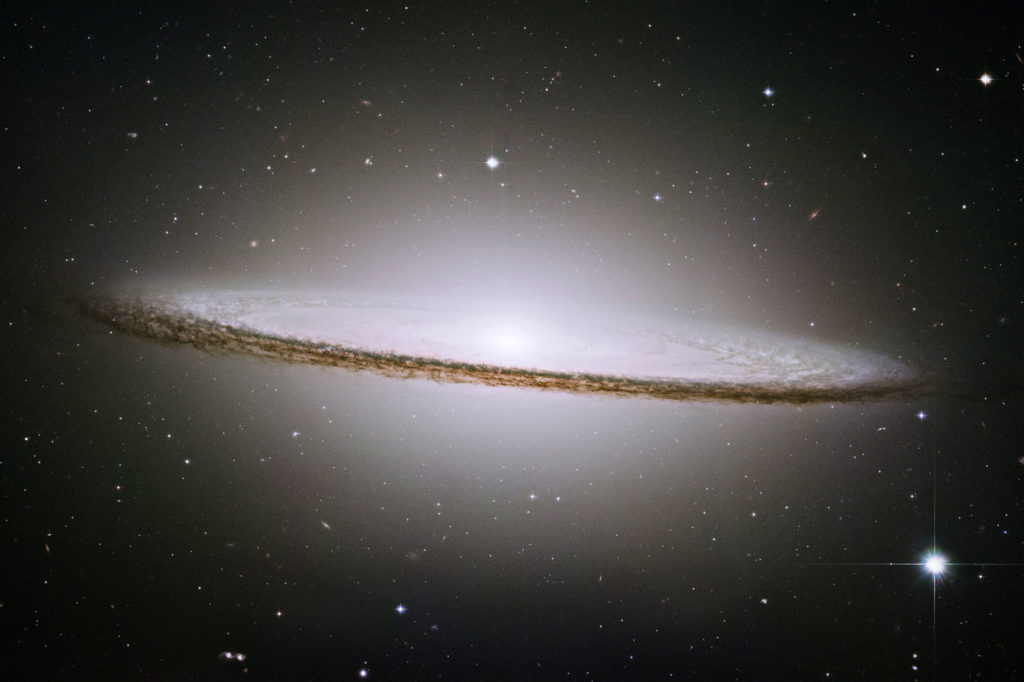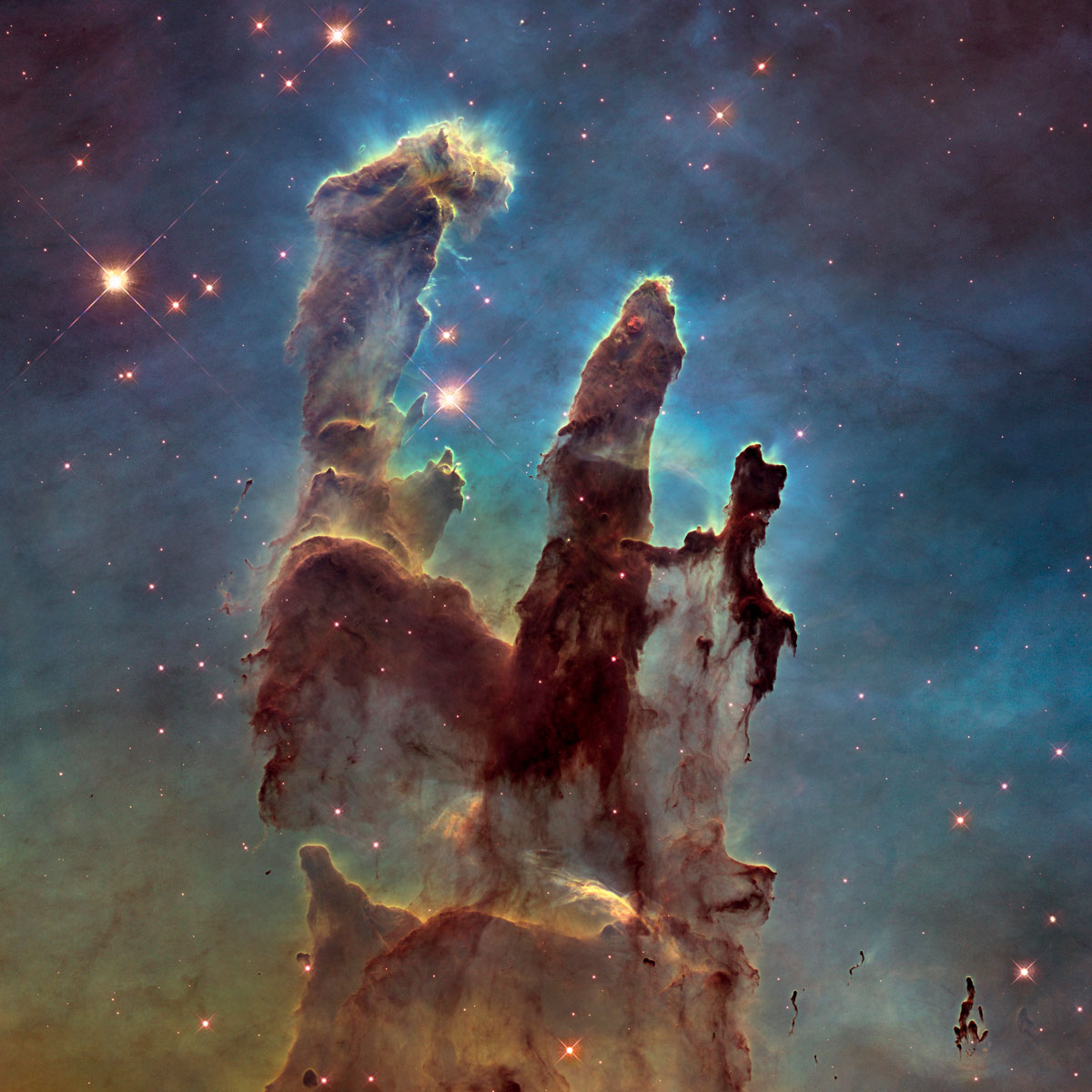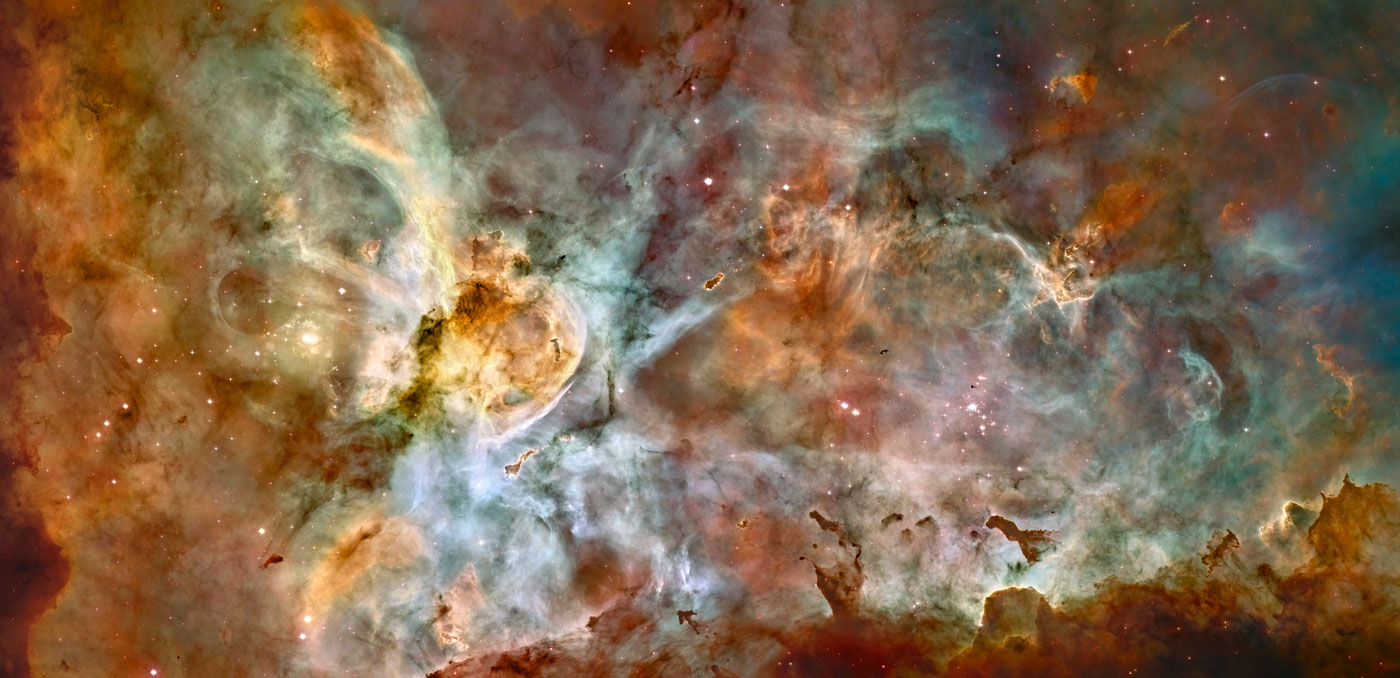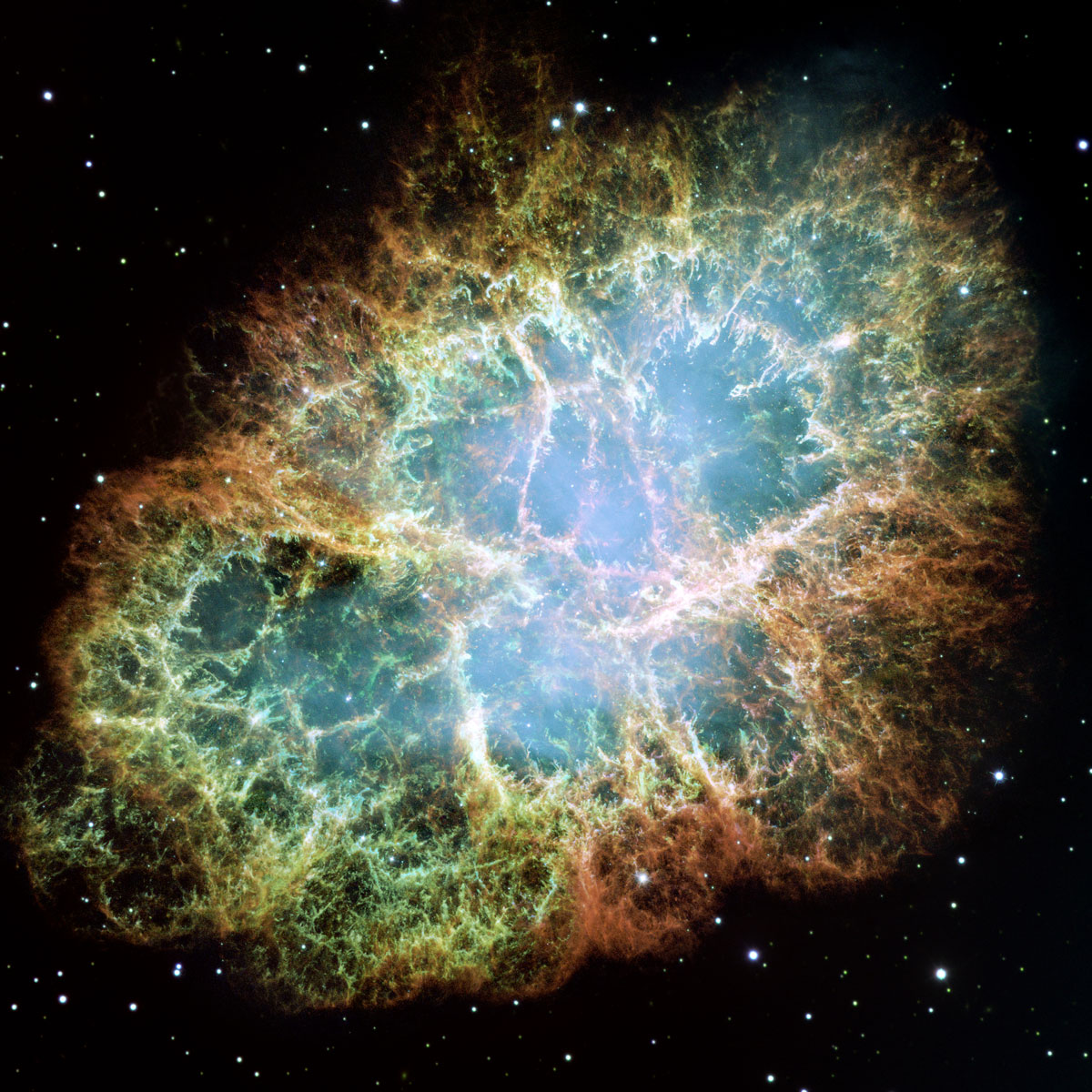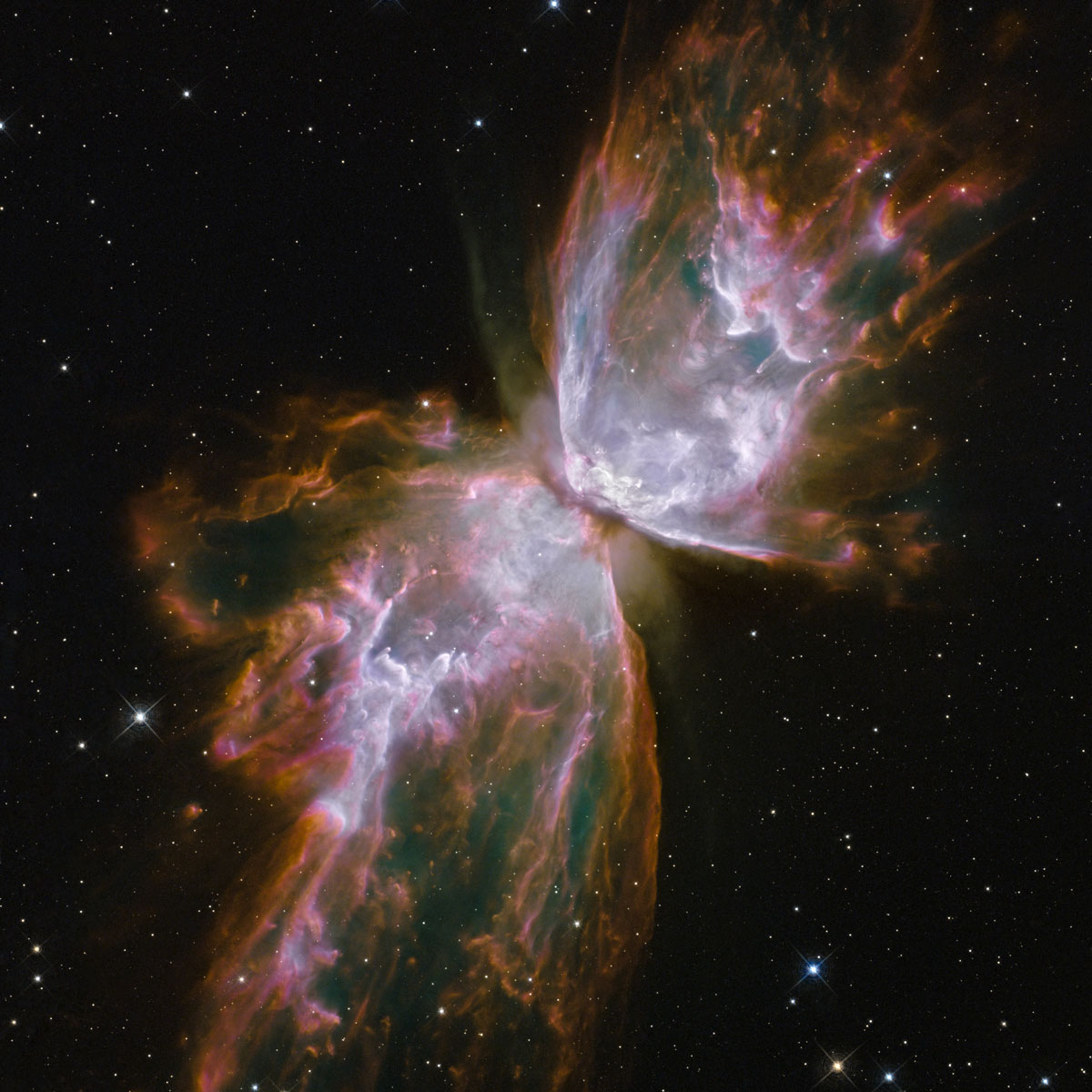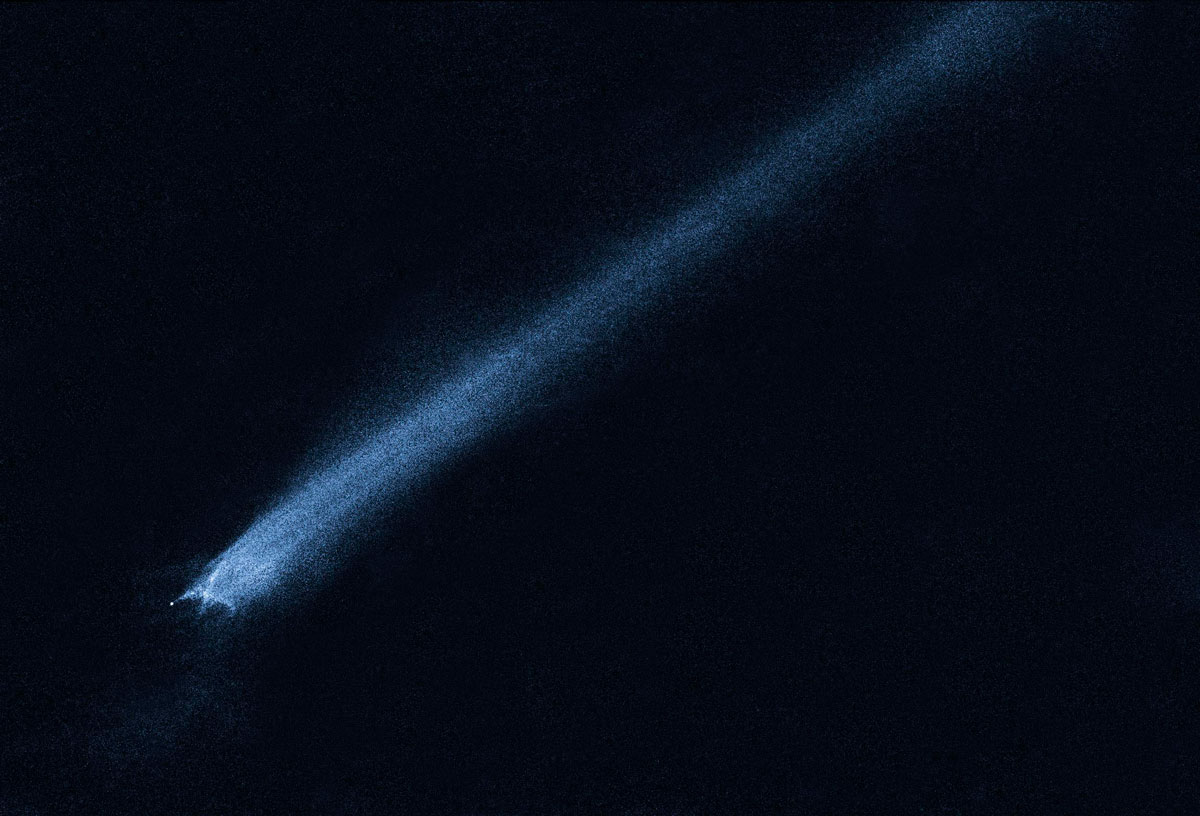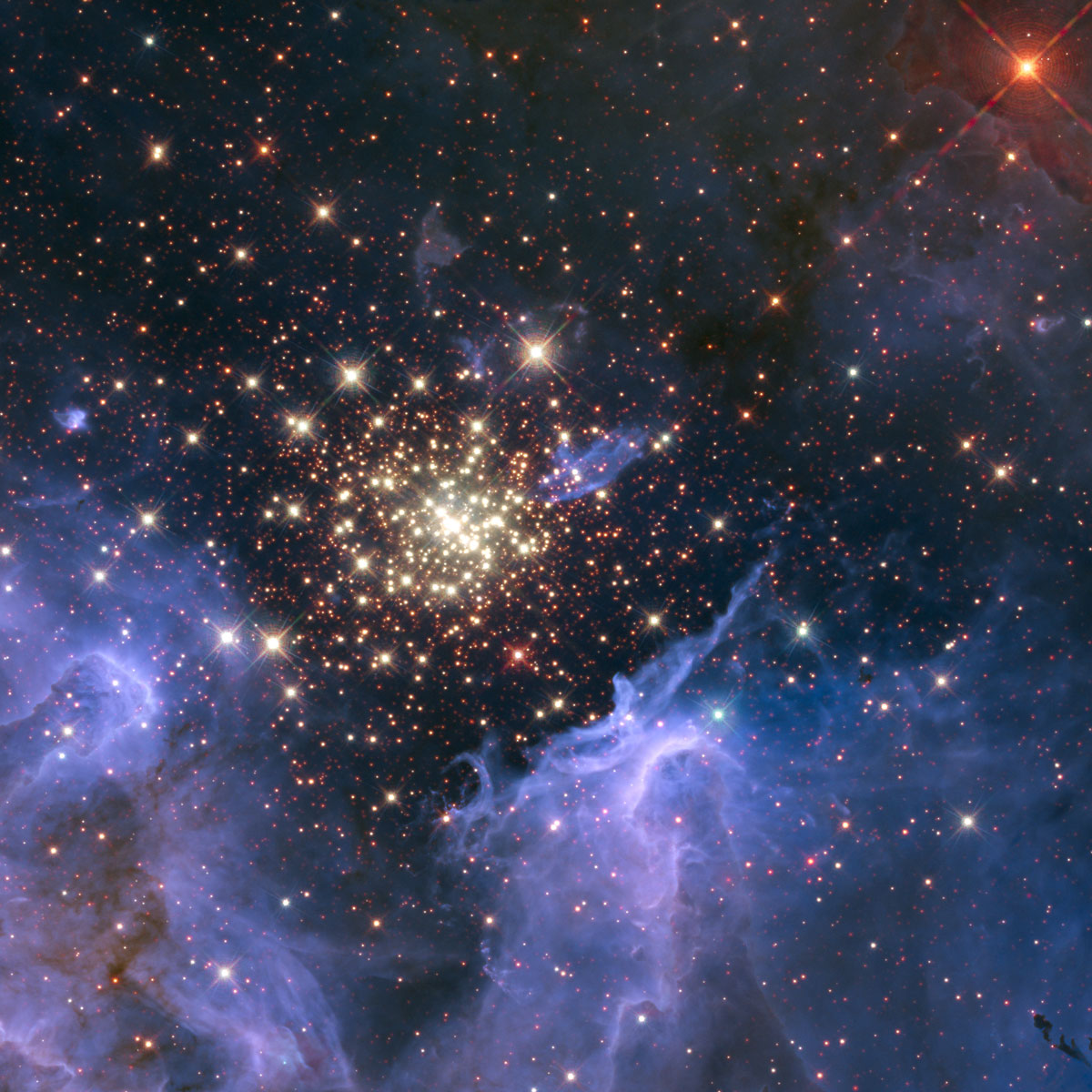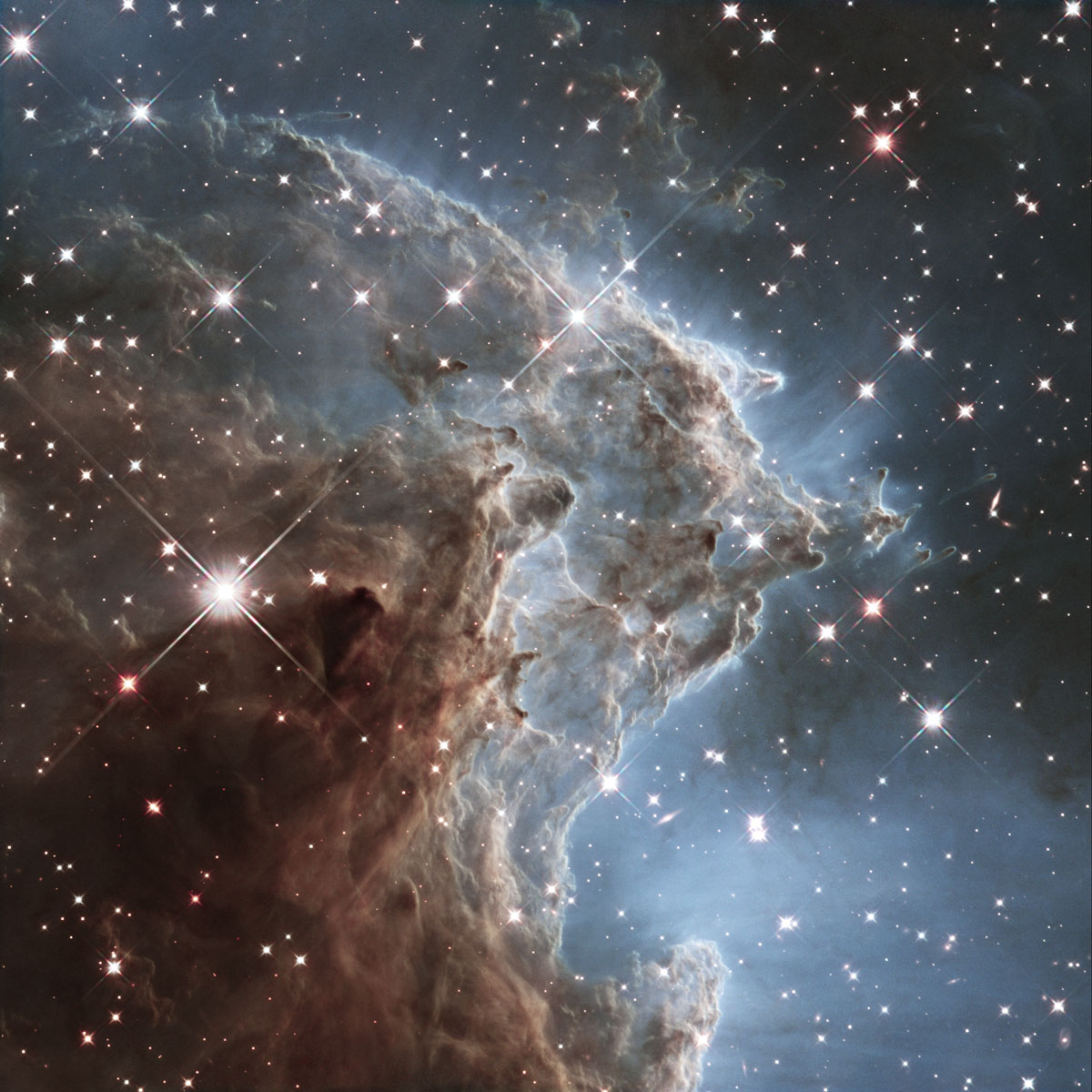The Hubble Telescope marks 29 years in space today which is nice. It gives a good excuse to gawk at some of the incredible photographs it’s captured over the years.
As it does every year, NASA released an anniversary photograph. This year it’s of the Southern Crab Nebula at the center of which are two stars about 7,000 light years away rotating in a final celestial dance. One’s a white dwarf (a star that’s used up all its fuel), the other a red giant (a star that’s rapidly expanded in a final gasp before it too will have used up all its fuel). Syfy has a good primer on how this works.
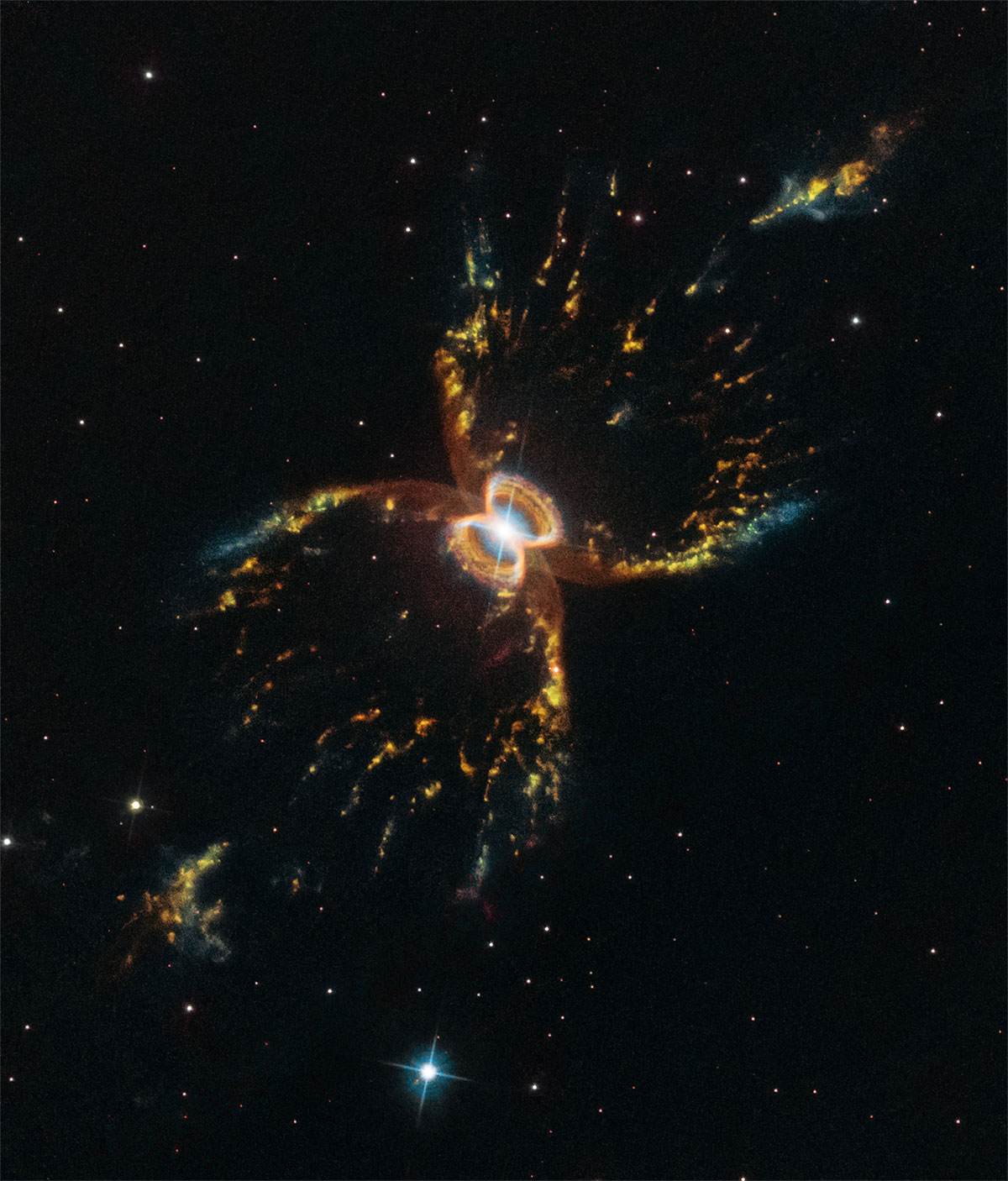
To say Hubble’s photos are universally spectacular states the obvious but three decades of consistently spectacular imagery has shaped public imagination of the cosmos. Sure, the non-astronomers among us may only increment slightly in our understanding of what’s going on, but our imagination is fueled by the scale and beauty of what’s far beyond ourselves. It lets us see deep into the past and in doing so lets us ponder our present and future.
Images link to Hubble Highlights on Flickr.
Houston, We Have an Problem
The space shuttle Discovery carried Hubble into space on April 24, 1990. Once deployed, it quickly stumbled out of the gate. Images coming back from it were somewhat fuzzy and seemed generally off. The issue was in an optical mirror. The world’s most advanced telescope couldn’t telescope.
“After Hubble’s deployment in 1990, scientist realized that the telescope’s primary mirror had a flaw called spherical aberration,” NASA explained when reporting about its 1993 mission to fix the issue. “The outer edge of the mirror was ground too flat by a depth of 2.2 microns (roughly equal to one-fiftieth the thickness of a human hair).”
Let’s repeat that, a measurement one-fiftieth the thickness of a human hair basically derailed the most anticipated telescope ever created. It was three years before NASA could send a crew to fix it. To do so, the crew basically installed telescope eyeglasses, or corrective optics. The telescope’s mirror couldn’t be replaced or removed for repair, so they added lenses that reversed the 2.2 micron aberration. This was the the first of five such missions over the years to replace, repair and upgrade parts on the telescope.
Some Notes About Edwin Hubble
Edwin Hubble didn’t initially train in astronomy. He didn’t even study any particular science. Instead, he followed his father’s wishes and studied law, first at the University of Chicago and later at Oxford. It wasn’t until his father died that he returned to school and got his PhD in astronomy just as the United States entered World War I.
After serving in it, he ended up at the Mount Wilson Observatory in California where he had access to the Hooker Telescope, the world’s largest, and made his first seminal discovery: that galaxies existed beyond our own.
Here’s how the New York Times reported his discovery in 1924.
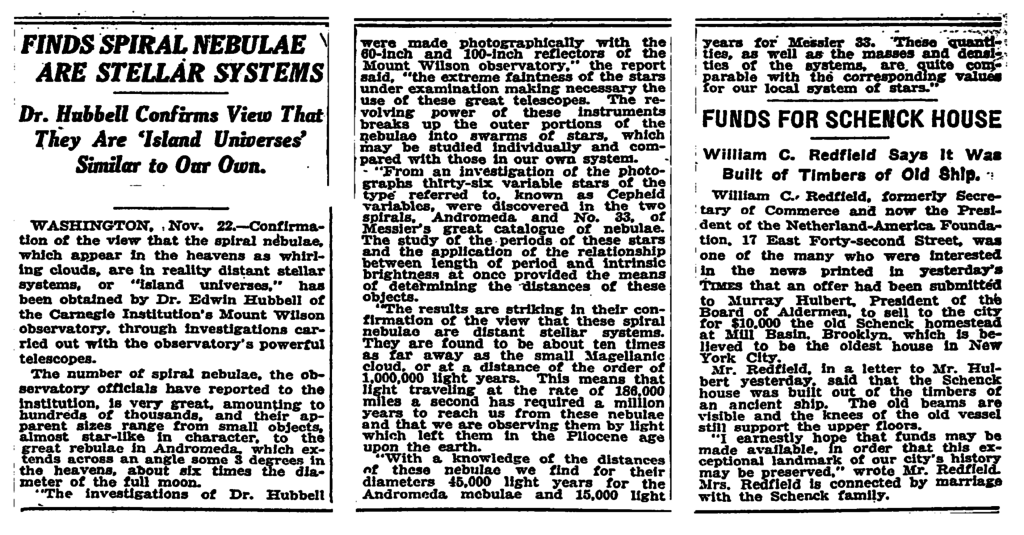
How’s that for mundane reporting about a fundamental, transformative discovery about the cosmos?

